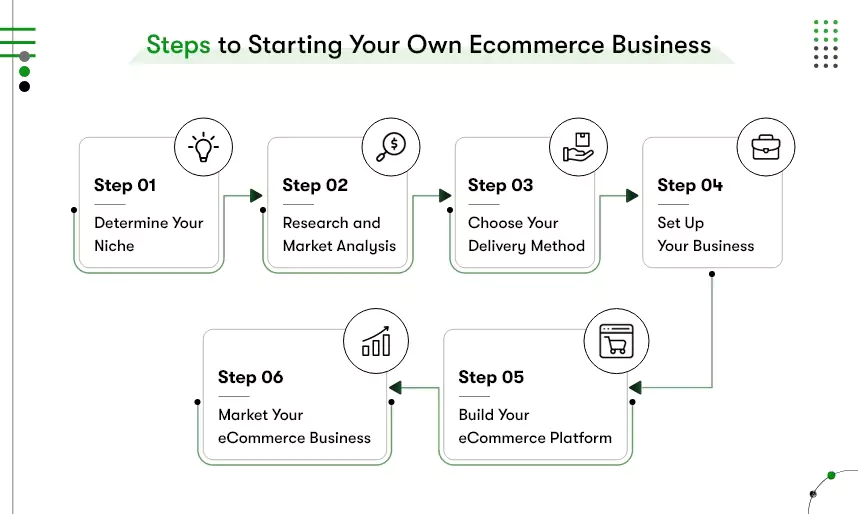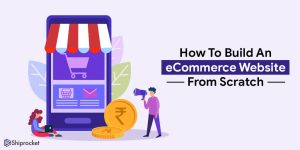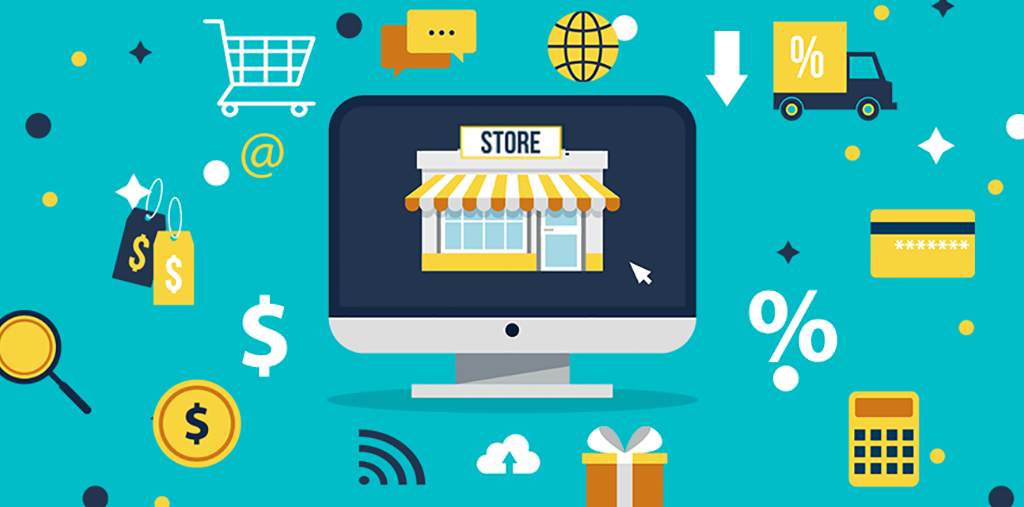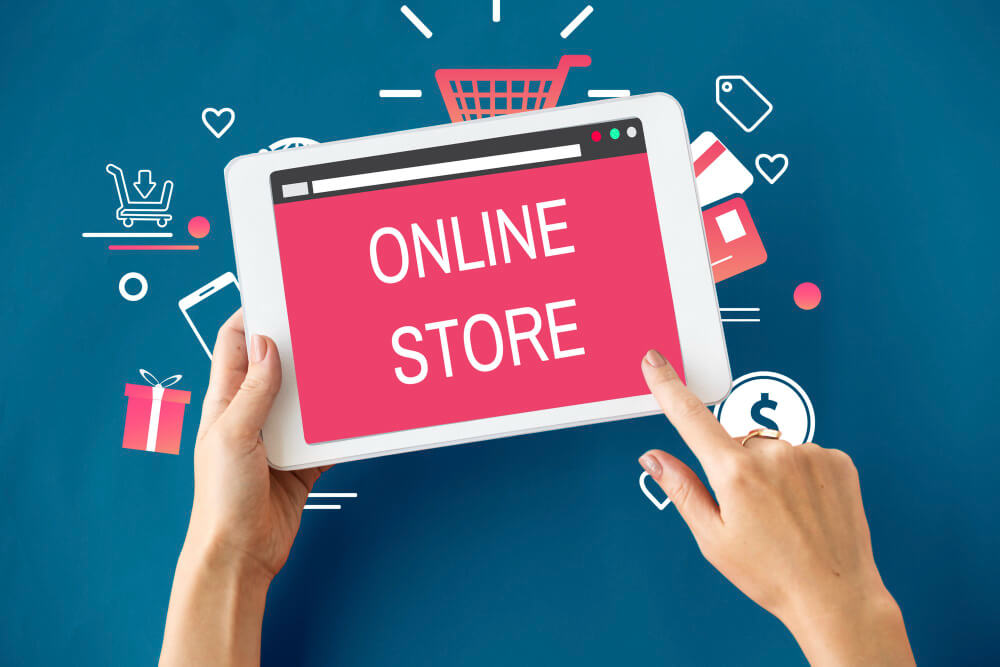Building a profitable e-commerce store can be a highly rewarding venture, but it’s also a challenging one. As the global e-commerce market continues to grow, the competition becomes stiffer, and only those who plan and execute their strategies well can thrive. Whether you’re starting a business from scratch or taking an existing brick-and-mortar store online, understanding the key components of a successful e-commerce store is crucial.
In this comprehensive guide, we’ll break down the entire process of building a profitable e-commerce store, from selecting a niche and platform to scaling your business.
Table of Contents:
- Selecting Your Niche and Target Audience
- Choosing the Right E-Commerce Platform
- Designing Your Store for Success
- Crafting an Effective Product Strategy
- Marketing Your E-Commerce Store
- Optimizing for Conversions
- Handling Logistics and Fulfillment
- Scaling Your E-Commerce Business

1. Selecting Your Niche and Target Audience
A. The Importance of Niche Selection
One of the most critical steps in building a profitable e-commerce store is selecting the right niche. A niche is a specific segment of the market that has unique preferences and demands. Selling to a niche audience allows you to focus your marketing efforts, differentiate yourself from competitors, and build a loyal customer base.
B. How to Choose a Profitable Niche
When choosing a niche, consider the following:
- Passion and Interest: Choose a niche you’re passionate about to stay motivated during tough times.
- Market Demand: Use tools like Google Trends, Keyword Planner, and Amazon Bestsellers to identify products or categories that are in demand.
- Competition: A niche with too much competition may be hard to penetrate, while one with too little might indicate a lack of demand.
- Profit Margins: Consider niches with higher profit margins, especially if you’re dropshipping or selling low-cost items.
C. Defining Your Target Audience
Understanding your target audience is just as important as choosing a niche. Create detailed buyer personas that include demographics, interests, pain points, and buying behaviors. This will inform your marketing, product selection, and customer service strategies.
2. Choosing the Right E-Commerce Platform
A. Popular E-Commerce Platforms
Once you’ve defined your niche and audience, it’s time to select an e-commerce platform. Here are some popular options:
- Shopify: Known for its ease of use, Shopify is a great choice for beginners, offering a range of customizable templates and integrations.
- WooCommerce: Built on WordPress, WooCommerce is a flexible, open-source platform ideal for businesses with more technical expertise.
- BigCommerce: A scalable platform with built-in marketing tools and SEO features, perfect for larger businesses.
- Magento: Best suited for large enterprises with the technical capacity to customize the platform to their needs.
B. Factors to Consider When Choosing a Platform
When selecting your e-commerce platform, consider:
- Cost: Look at monthly fees, transaction fees, and additional costs such as apps and plugins.
- Ease of Use: Choose a platform with a user-friendly interface, especially if you don’t have coding experience.
- Customization Options: Consider how much you want to customize your store’s design and functionality.
- Scalability: Ensure the platform can grow with your business.
3. Designing Your Store for Success
A. Prioritize User Experience (UX)
A well-designed store can make the difference between a visitor and a customer. Ensure that your website is easy to navigate, visually appealing, and optimized for mobile devices.
- Navigation: Use clear, intuitive navigation menus so customers can find products easily.
- Search Functionality: Implement a powerful search bar that helps users find exactly what they need quickly.
- Mobile Optimization: Ensure that your store is fully responsive on smartphones and tablets, as mobile shopping continues to rise.
B. Invest in a Professional Design
While it may be tempting to use free themes or templates, investing in a professional design can elevate your store’s credibility. Customers are more likely to trust a clean, professional-looking website, which can lead to higher conversions.
4. Crafting an Effective Product Strategy
A. Source High-Quality Products
The quality of your products is the foundation of your e-commerce store’s success. Whether you’re manufacturing your products, working with a supplier, or using dropshipping, ensure that the products meet high standards.
B. Pricing Strategy
Your pricing strategy will directly impact your profitability. Avoid setting prices too low, as this can undermine the perceived value of your products. On the other hand, overpricing can drive customers away. Research your competitors’ pricing and consider offering different pricing tiers for premium products.
C. Product Descriptions and Images
Product descriptions should be informative, persuasive, and optimized for SEO. Focus on highlighting the benefits and features of each product. High-quality images are equally important, as they are often the first thing customers notice. Use multiple angles, zoom capabilities, and lifestyle images to showcase your products.
30 WordPress Tips You Can Use Today![]()


5. Marketing Your E-Commerce Store
A. Leverage Social Media
Social media platforms like Instagram, Facebook, Pinterest, and TikTok are powerful marketing tools for e-commerce businesses. Create engaging content that showcases your products, connects with your audience, and drives traffic to your store.
- Influencer Marketing: Partner with influencers in your niche to promote your products to their followers.
- User-Generated Content: Encourage customers to share photos and reviews of your products on social media.
B. Use Email Marketing
Email marketing is a highly effective way to engage with potential and existing customers. Build your email list by offering incentives such as discounts or freebies in exchange for email sign-ups.
- Abandoned Cart Emails: Automatically send emails to customers who leave items in their cart without completing a purchase.
- Personalized Campaigns: Use segmentation to send targeted emails based on customer behavior and preferences.
C. Invest in SEO
Search engine optimization (SEO) is critical for driving organic traffic to your e-commerce store. Conduct keyword research to optimize your product pages, blog content, and meta descriptions. Building backlinks and improving site speed can also boost your SEO performance.
D. Paid Advertising
If you have the budget, paid advertising can provide quick results. Platforms like Google Ads and Facebook Ads allow you to target specific audiences with precision. Experiment with different ad formats such as video ads, carousel ads, and retargeting campaigns to see what works best for your business.
6. Optimizing for Conversions
A. Simplify the Checkout Process
A complicated or lengthy checkout process can lead to cart abandonment. Streamline the process by reducing the number of steps, offering guest checkout, and providing multiple payment options.
B. Trust Signals
Build trust with your customers by displaying security badges, reviews, and testimonials. Offering a clear return policy and customer support options can also improve conversion rates.
C. Use Upselling and Cross-Selling
Increase your average order value by suggesting complementary products or upgrades during the checkout process. For example, if a customer is purchasing a camera, you can recommend additional accessories like tripods or memory cards.
7. Handling Logistics and Fulfillment
A. Shipping and Fulfillment Strategy
Shipping plays a key role in customer satisfaction. Offer multiple shipping options, including expedited delivery for customers who need their items quickly. Free shipping, if feasible, can also boost sales.
- Third-Party Logistics (3PL): Many e-commerce stores use third-party logistics providers to handle warehousing, packaging, and shipping. This allows you to focus on marketing and scaling your business.
- In-House Fulfillment: If you choose to manage fulfillment in-house, invest in a robust inventory management system to avoid stockouts and delays.
B. Return Management
A clear and simple return policy can increase customer confidence and loyalty. Make the return process easy for customers by including return labels and instructions with their orders.
8. Scaling Your E-Commerce Business
A. Automate Where Possible
Automation can help you scale by saving time and reducing manual tasks. Tools like email marketing automation, inventory management software, and customer relationship management (CRM) systems can streamline your operations.
B. Expand Product Offerings
Once your e-commerce store is up and running, consider expanding your product line to increase revenue. Listen to customer feedback and analyze sales data to identify which products are performing well and which ones you could add.
C. Explore International Markets
If your store is performing well locally, consider expanding to international markets. Ensure that your e-commerce platform supports multiple currencies and languages, and partner with logistics companies that offer international shipping.
Conclusion
Building a profitable e-commerce store from scratch requires careful planning, execution, and ongoing optimization. From selecting the right niche and platform to creating effective marketing strategies, each step plays a vital role in your store’s success. By following the strategies outlined in this guide and continuously adapting to the evolving e-commerce landscape, you can create a thriving online business that generates steady revenue.





Leave a Reply